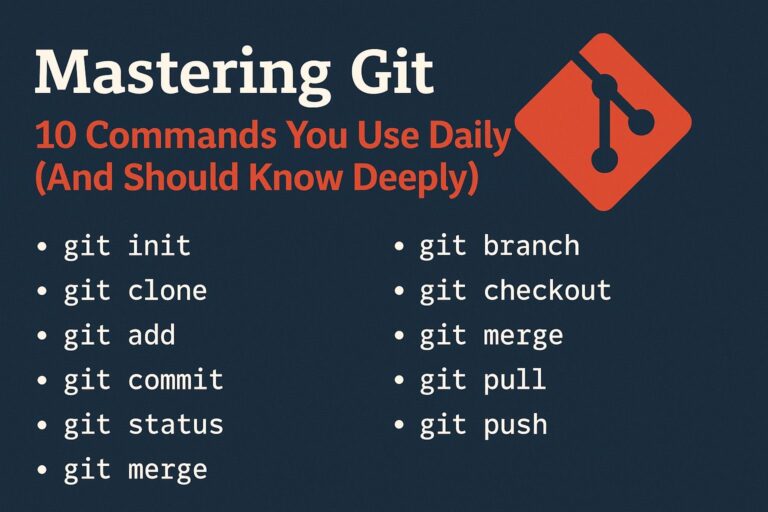
Recommendation engines are the backbone of personalized experiences in modern applications like Netflix, Amazon, Spotify, and YouTube. They help users discover relevant content based on preferences, behaviors, or similarities with others.
This comprehensive guide explains the fundamentals of building recommendation engines in Python, different algorithmic approaches, essential libraries, implementation strategies, and real-world considerations.
1. What Is a Recommendation Engine?
A recommendation engine (or recommender system) is a class of algorithms that offers suggestions to users based on various forms of data, such as past interactions, preferences, or similarities among users or items. These systems enhance user experience, drive engagement, and increase conversions.
Common application areas include:
- Product recommendations in e-commerce
- Content suggestions in streaming platforms
- Job matching in career portals
- Friend suggestions in social networks
2. Types of Recommendation Systems
1. Content-Based Filtering
- Recommends items similar to those the user has interacted with
- Uses features or metadata (e.g., genre, keywords, price)
- Independent of other users
2. Collaborative Filtering
- Relies on past user behavior and user-item interactions
- Makes predictions based on similar users or items
Subtypes:
- User-based: Recommends items liked by similar users
- Item-based: Recommends items similar to ones the user has rated highly
3. Hybrid Systems
- Combines both content-based and collaborative methods
- More robust and addresses cold-start and sparsity issues
3. Key Python Libraries
- pandas: Data manipulation and preprocessing
- numpy: Numerical operations
- scikit-learn: Similarity metrics, clustering, model training
- surprise: Dedicated to collaborative filtering techniques
- scipy: Sparse matrix support and linear algebra
- lightfm: Hybrid models with support for implicit and explicit data
- tensorflow/pytorch: Deep learning for advanced recommendation models
4. Dataset Used
We will use the MovieLens 100k dataset, a classic benchmark for recommender systems.
Install Surprise and download the dataset:
pip install scikit-surprise5. Collaborative Filtering with Surprise Library
Step 1: Load the Dataset
from surprise import Dataset, Reader
# Load built-in dataset
data = Dataset.load_builtin('ml-100k')Step 2: Train/Test Split
from surprise.model_selection import train_test_split
trainset, testset = train_test_split(data, test_size=0.2)Step 3: Build a KNN Model (User-Based)
from surprise import KNNBasic
sim_options = {
'name': 'cosine',
'user_based': True
}
model = KNNBasic(sim_options=sim_options)
model.fit(trainset)Step 4: Make Predictions and Evaluate
from surprise import accuracy
predictions = model.test(testset)
accuracy.rmse(predictions)Step 5: Get Top-N Recommendations
from collections import defaultdict
def get_top_n(predictions, n=5):
top_n = defaultdict(list)
for uid, iid, true_r, est, _ in predictions:
top_n[uid].append((iid, est))
for uid, user_ratings in top_n.items():
user_ratings.sort(key=lambda x: x[1], reverse=True)
top_n[uid] = user_ratings[:n]
return top_n6. Content-Based Filtering with Scikit-learn
Step 1: Load Data and Preprocess
import pandas as pd
from sklearn.feature_extraction.text import TfidfVectorizer
from sklearn.metrics.pairwise import cosine_similarity
movies = pd.read_csv('movies_metadata.csv', low_memory=False)
movies['overview'] = movies['overview'].fillna('')Step 2: Compute TF-IDF and Similarity Matrix
tfidf = TfidfVectorizer(stop_words='english')
tfidf_matrix = tfidf.fit_transform(movies['overview'])
cosine_sim = cosine_similarity(tfidf_matrix, tfidf_matrix)Step 3: Build Index and Define Function
indices = pd.Series(movies.index, index=movies['title']).drop_duplicates()
def get_recommendations(title, cosine_sim=cosine_sim):
idx = indices[title]
sim_scores = list(enumerate(cosine_sim[idx]))
sim_scores = sorted(sim_scores, key=lambda x: x[1], reverse=True)
sim_scores = sim_scores[1:11]
movie_indices = [i[0] for i in sim_scores]
return movies['title'].iloc[movie_indices]7. Hybrid Recommendation Using LightFM
Step 1: Install and Import
pip install lightfmfrom lightfm import LightFM
from lightfm.datasets import fetch_movielens
# Load data
data = fetch_movielens(min_rating=4.0)Step 2: Train a Hybrid Model
model = LightFM(loss='warp')
model.fit(data['train'], epochs=10, num_threads=2)8. Best Practices for Production Systems
- Use sparse matrices to scale with large datasets
- Incorporate implicit feedback like watch time, clicks, and favorites
- Retrain models regularly to reflect new behavior
- Track metrics such as precision@k, recall@k, F1-score, NDCG
- Add contextual data (time, location, device) for better personalization
- Monitor and log recommendations in production
9. Tools for Real-World Deployment
- Model Serialization:
joblib,pickle,torch.save,ONNX - API Deployment: Flask, FastAPI, Django REST Framework
- Interactive Demos: Streamlit, Gradio, Dash
- Scalable Storage: PostgreSQL, MongoDB, Redis, or S3
- Distributed Computing: Apache Spark, Dask
- Monitoring: Prometheus, Grafana, custom log analysis
Final Thoughts
Recommendation systems are crucial for personalized user experience. Python offers a wide range of libraries and tools to experiment and build recommender models. Start with smaller collaborative or content-based models, understand user-item dynamics, and progress toward hybrid and scalable systems. By combining theoretical knowledge with practical projects, you can gain hands-on experience to build real-world AI-powered recommendation engines.

I’m Shreyash Mhashilkar, an IT professional who loves building user-friendly, scalable digital solutions. Outside of coding, I enjoy researching new places, learning about different cultures, and exploring how technology shapes the way we live and travel. I share my experiences and discoveries to help others explore new places, cultures, and ideas with curiosity and enthusiasm.






